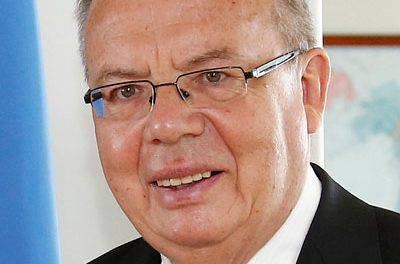
Access to information technology in a digital era

By Paulina N. Moses and Tauno Iileka.
In a tiny village, somewhere in Omusati Region, school learner Alweendo was told to go home because there is a new virus that has become a global threat. A few weeks later, school has still not opened and Alweendo learns that he could still continue with his studies, but through e-learning.
He asked his grandmother what e-learning was, to which she had no answer. They then asked their neighbour, a veteran teacher, to which she responded, “we have to learn on the computer, but I also do not know how to use it.”
Admittedly, we have as a nation planned towards the fourth industrial revolution with previous and the current National Development Plan (NDP5) targeting to integrate information and communication technology (ICT) in all sectors including e-learning.
The global Coronavirus (COVID-19) pandemic has, however, amplified the dire need for accelerated ICT in Namibia, which is, unfortunately, not accessible to all citizens. During the COVID-19 pandemic, we have been relying mostly on new technologies to get instant information and provide immediate feedback, owing to technological advances over the years. It is undisputable that citizens need accurate and timely information to engage in social dialogue, make informed decisions and, directly or indirectly, influence policy.
Facts and Figures
The Ministry of Education revealed that out of 804,000 pupils, only 13000 were able to access the ministry’s e-learning platforms during the national lockdown. It was reported that only 5 % of learners in Oshikoto region had access to e-learning. If left to interpretation, this could mean that we have a high level of computer illiteracy, coupled with limited access to support infrastructure such telecommunication and electricity, among school learners who are the leaders of tomorrow – a tomorrow that is a technological era.
While a significant population of Namibia does have access to mobile phone network coverage with mobile subscriptions exceeding the number of inhabitants, access to high-speed internet (broadband) seems to be lagging behind. In 2015, only 21% of the population had access to broadband infrastructure, which, according to NDP5, is expected to increase more than four times to reach 90 per cent.
This is possible, especially with recent investments into projects such as MTC’s 081Every1 campaign which aims for 100% network coverage of the Namibian population by constructing over 500 broadband-equipped network towers countrywide.
The World Economic Forum’s Global Competitive Index shows that by 2019, only 47% of Namibia’s population subscribes to either mobile or fixed broadband, which possibly means that over half of the population either does not have access to internet infrastructure or they cannot afford subscription fees and the enabling devices.
Furthermore, only 51% of the adult population use the internet, which again gives clues in terms of literacy and internet affordability. The Ministry of Information and Communication Technology (ICT) has on several occasions conceded that access to internet services is unaffordable by some, suggesting that service providers should share infrastructure as way to minimise the costs to consumers.
Possible Interventions
The ICT ministry should be commended for establishing rural ICT centres in all fourteen regions. These centres are run by the community and provide the community access to computers and internet. However, though non-profit, the centres provide these services to the community at a fee. Volunteers also do not receive an allowance or stipend to cater for their basic expenses, which negatively affects their commitment.
A number of volunteer-based community projects established by the government turn into white elephants simply because volunteerism does not encourage dedication. This necessitates the ministry to assess its plan and expedite the recruitment of paid human resources at these centres and provide subsidised ICT services.
The education and youth ministries should also be commended for their headship in accelerating ICT in the country. For over two decades, regional libraries have provided community members access to computers and internet. Libraries such as those in Omuthiya and Gobabis provide free and wireless internet to all visitors which is accessible on personal portable electronic devices.
Unfortunately, these services are typically only in urban areas and not in remote areas, creating an even wider digital divide. Although the ICT ministry’s rural ICT centres are strategically located in some remote areas, two centres per region are not nearly enough to bridge the digital divide. ICT should be accessible at the tip of our fingers without having to travel long distances to access it, which calls for free wireless internet public hotspots in some villages.
Many people do not have the basic skills to operate a computer. While the strategy has always been to offer computer classes in school as a subject, the limitation to have this subject fully-fledged should not deter the government from providing learners with basic ICT skills. To be able to operate a computer, by typing word documents, presentations or surfing the internet, one needs no more than a month’s lesson, depending on the learner’s age. Most people have access to smartphones, therefore making it easier to navigate a computer.
For out-of-school youth, a week should be sufficient as demonstrated by the Ministry of ICT in Oshikoto region who ran a free basic ICT training course for only one week.
Caption: Paulina N. Moses is an official in the Ministry of ICT and columnist. Tauno Iileka is a public relations practitioner at the Omaheke Regional Council. They both write in their personal capacities.












































